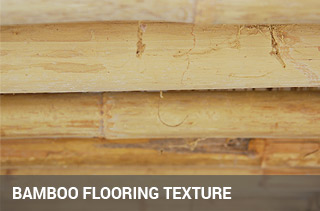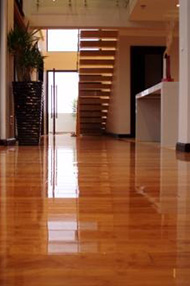Back to Floor Sanding
The Ultimate Guide to Bamboo Floor Restoration

When discussing bamboo flooring, it’s important to clarify a common misconception: bamboo is not a tree, but rather a type of grass. This distinction is significant, especially considering that bamboo flooring is a relatively new material on the market, and its quality can vary widely among manufacturers. Unfortunately, there isn't a dedicated grading system in place to help consumers gauge the quality of bamboo products effectively. As a result, the experiences of buyers can be quite mixed - some individuals are delighted with their bamboo floors, while others regret their purchase.
Bamboo flooring comes in several types, each with its unique characteristics:
-
Horizontal Bamboo Flooring: Strips of bamboo are cut and then layered on top of each other to form a plank, which is subsequently joined together. This method often showcases the natural beauty of the bamboo grain.
-
Vertical Bamboo Flooring: In this type, bamboo slices are placed on their edges and pressed together, then laminated. This results in a denser, more uniform appearance.
-
Strand Woven Bamboo Flooring: This method involves trimming leftover bamboo strands, which are then compressed and bonded with adhesive under high heat and pressure. Strand woven bamboo is known for its extreme durability and resistance to wear, making it an excellent choice for high-traffic areas.
Can Bamboo Even Be Sanded?
Yes, most types of bamboo can be sanded and refinished, however, strand woven bamboo presents unique challenges.
1. Hardness: Strand woven bamboo is notably hard, with a Janka hardness rating of approximately 3,000 lbf. For comparison, English oak has a rating of only 1,120 lbf. This significant difference in hardness makes sanding a labour-intensive and potentially difficult task.
2. Adhesive Content: A considerable portion of strand woven bamboo flooring is composed of adhesive used in the manufacturing process. Even if you manage to sand it down successfully, you would essentially be finishing over the glue, which can affect the quality and durability of the final result.
3. Health Concerns: Many bamboo floors, particularly those manufactured in China, may contain formaldehyde, a harmful chemical known to pose health risks. Formaldehyde can also be found in some solvent-based lacquers, which are notorious for their toxicity. Symptoms of exposure include irritation in the nose, eyes, and throat. While sanding bamboo is possible, it can be hazardous, especially for DIY projects. Formaldehyde is banned in Europe for valid reasons, highlighting the importance of safety.
4. Dust Contamination: When sanding bamboo, the dust created can contaminate your home if not properly managed. Once the surface layer is stripped away, the remaining dust can be harmful. Even the best sanding equipment cannot capture 100% of the dust, leaving potential residues that can affect indoor air quality. It is essential to use a high-quality dust extractor during the sanding process to minimise exposure.
When Is the Bamboo in Need of Restoration?

Bamboo floor restoration may be needed in the following situations:
-
Immediately After Installation: If the bamboo flooring has not been pre-finished, restoration may be required to apply a protective sealant and enhance its appearance.
-
Several Years Post-Installation: Over time, scratches and worn-out patches can develop, indicating that restoration is needed.
The restoration process for bamboo flooring is quite similar to that of traditional wood floors, and any professional floor sanding company can assist you. However, it’s important to remember that bamboo is generally softer than most hardwood species, so a finer grit sandpaper should be used during the restoration process.
Restoration Steps
-
For New Installations: If you’re restoring bamboo immediately after installation, buffing alone may suffice. Buffing smooths the surface and prepares it for the application of sealant.
-
For Older Flooring: If the flooring has seen several years of use, wood floor sanding will likely be necessary. This process removes scratches, light indentations, and the top layer of sealant. After sanding, buffing will smooth the bamboo floor surface, followed by the application of new coats of sealant.
Colour Considerations
If the bamboo flooring has been carbonized and its colour has darkened, sanding will not alter its colour. However, if the bamboo has been stained or has naturally changed over time, sanding may help restore it to its original shade.
Signs of Damage
Identifying signs of damage early can save you time and money in the long run. Common indicators that your bamboo flooring may need restoration include noticeable scratches and scuff marks that disrupt the smooth surface. If you begin to see uneven surfaces or a wavy appearance, this may be a sign of warping or installation issues that require attention. Discolouration, such as fading or dark spots, can also indicate that the finish is wearing off or that moisture has affected the bamboo. Additionally, if you notice a dull appearance that persists even after cleaning, it may be time to consider restoring the floor to revive its natural beauty and lustre.
Maintenance Tips
Proper maintenance is essential to prolong the life of your bamboo flooring and delay the need for restoration. Regular cleaning is key - use a soft broom or a vacuum with a soft brush attachment to remove dirt and debris. For deeper cleaning, a damp microfiber mop with a mild pH-balanced cleaner specifically formulated for bamboo or hardwood floors is ideal. Avoid using harsh chemicals or excessive water, as these can damage the finish and affect the bamboo's structure. Placing rugs at entryways can help minimise dirt and grit that can scratch the surface. Finally, ensure that humidity levels in your home remain stable, as extreme fluctuations can lead to the expansion or contraction of the bamboo, increasing the likelihood of damage.
Professional vs. DIY
When it comes to restoring bamboo flooring, both professional services and DIY methods have their advantages and disadvantages. Hiring a professional can ensure a high-quality restoration process, as they possess the expertise, equipment, and experience to handle various issues effectively. They can also identify underlying problems that may not be immediately apparent to a DIYer. However, professional services can be costly, and might not fit every budget. On the other hand, DIY restoration can be more economical and allows homeowners to take control of the process.
However, it comes with risks, particularly when it comes to sanding. Improper techniques can lead to uneven surfaces, damage to the flooring, or exposure to harmful dust from adhesives and finishes. Therefore, it’s essential to weigh the pros and cons of each option based on your skills, comfort level, and budget before deciding on the best course of action for restoring your bamboo floor.